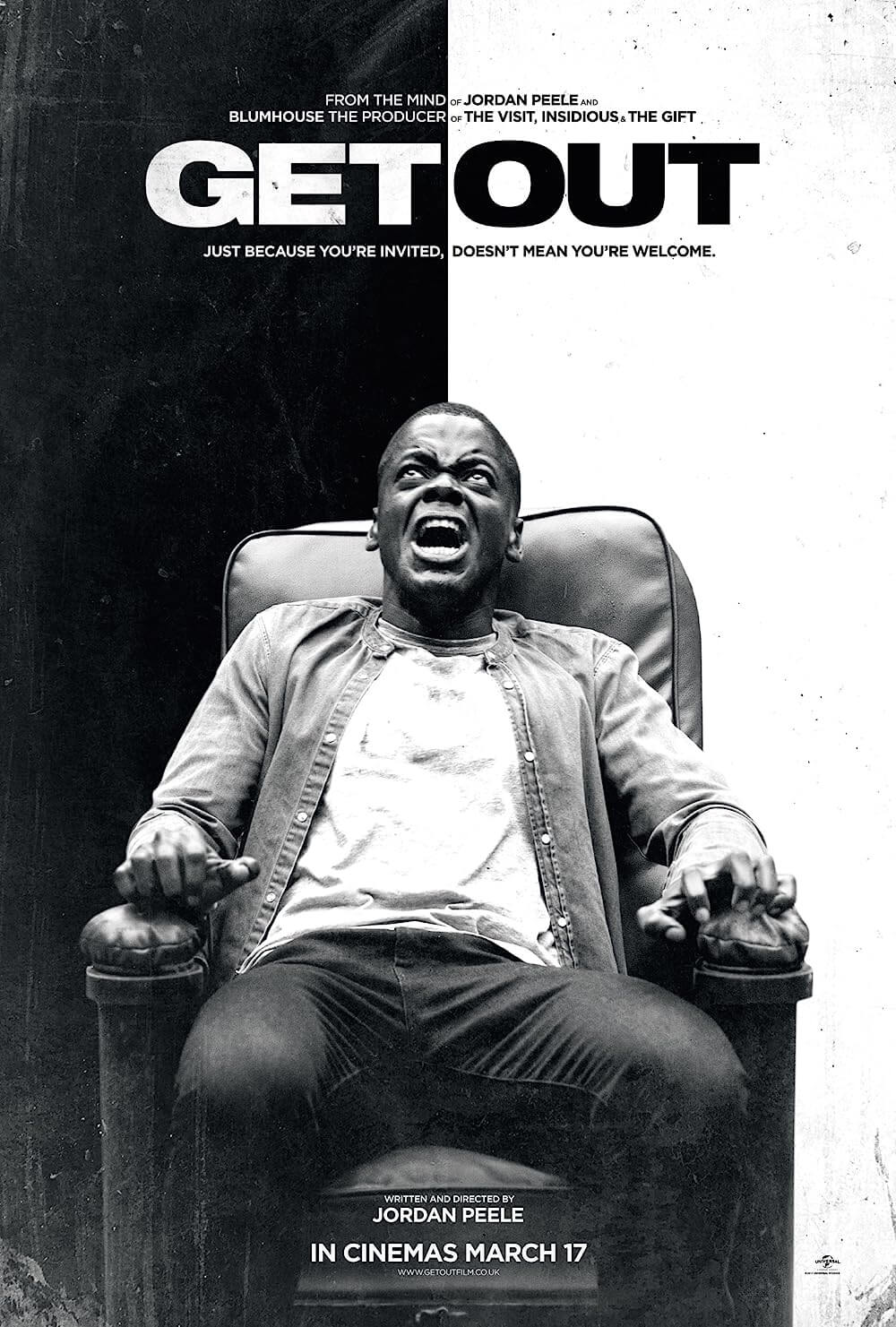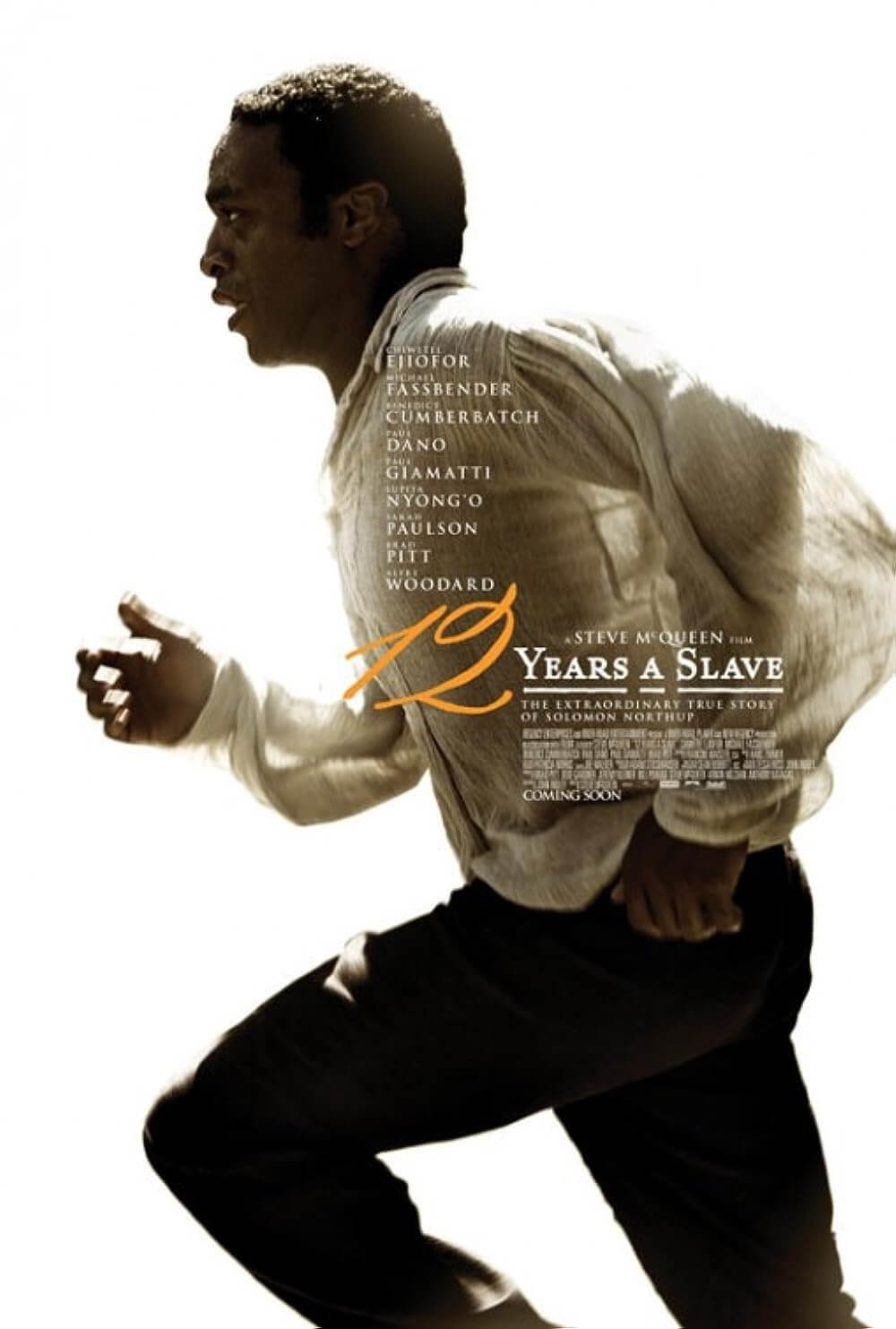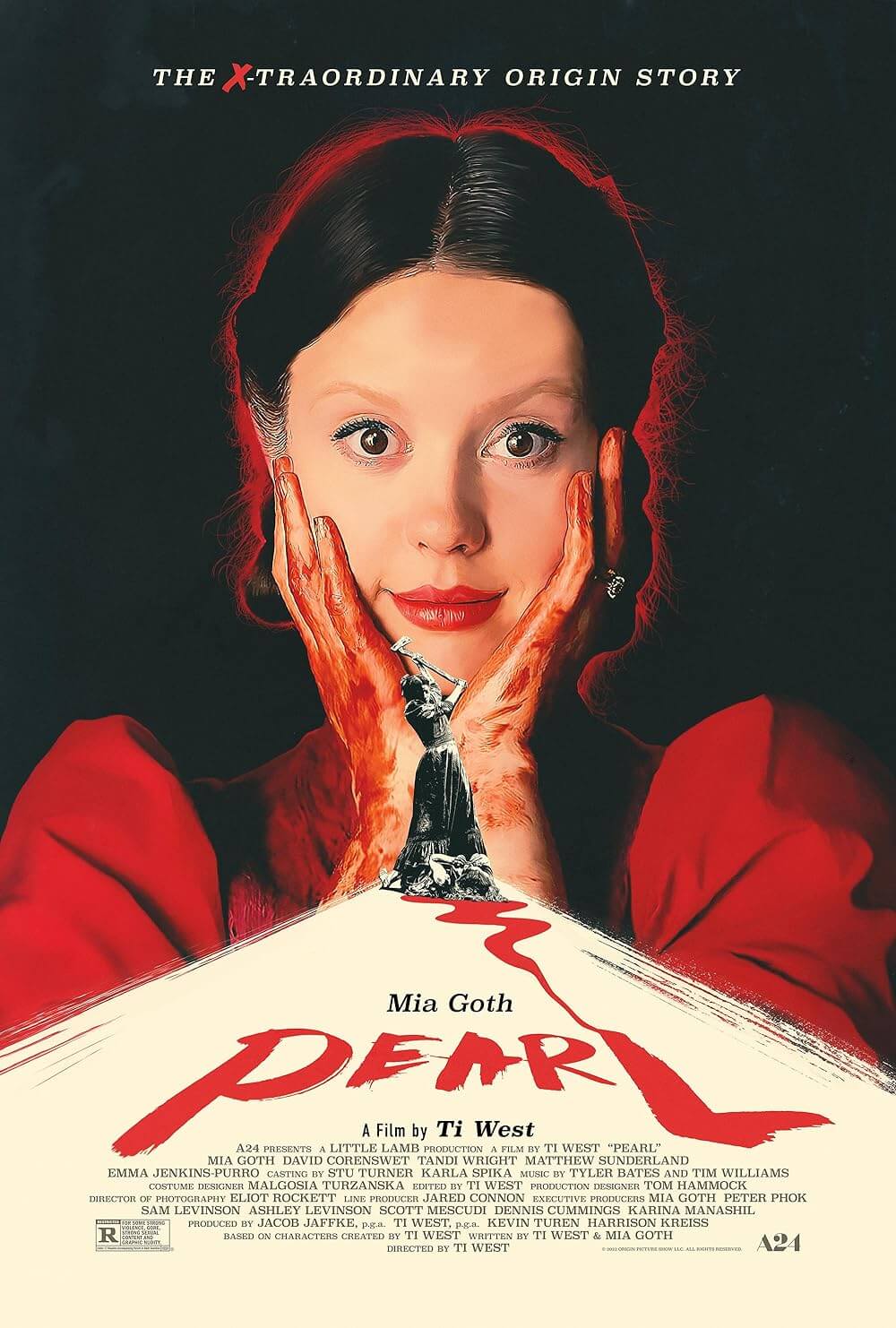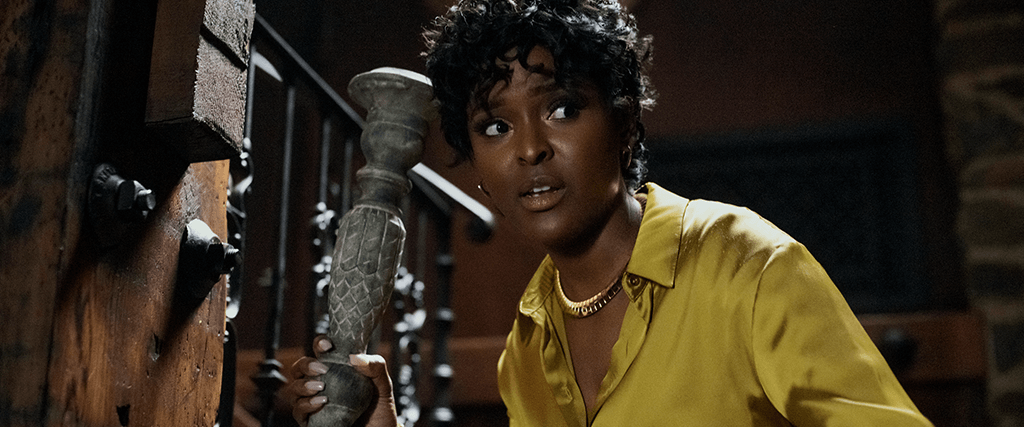
The Blackening
By Brian Eggert |
The Black character always dies first in horror movies. That’s the stereotype, anyway. Genre practitioners have been aware of this trope for decades, and even though it’s rarely in practice today, the notion persists. The idea has become so omnipresent that it’s been referenced in horror parodies, such as the Scary Movie series, as well as straight horror fare. It’s even remarked upon in Scream 2 (1997), where the first two victims, Jada Pinkett and Omar Epps, are aware of the cliché; however, that doesn’t save them. In their book published earlier this year, appropriately called The Black Guy Dies First, writers Robin R. Means Coleman and Mark H. Harris identify the 1967 proto-slasher Spider Baby as the first example of a Black man dying first—former minstrel performer Mantan Moreland is stabbed to death by a deranged bumpkin who thinks she’s an arachnid. This trend has continued through countless other slasher franchises, from Friday the 13th to A Nightmare on Elm Street, with Black characters often remarking on their fate before it arrives. The book observes that this truism proves accurate only about half of the time, but still, that’s an awful lot.
Given that the stereotype has been lampooned and meta-textually referenced for many years at this point, The Blackening seems late to the game. The conceit involves a group of Black friends who plan to spend Juneteenth at a cabin in the woods, where a masked killer inevitably stalks and attempts to kill them one by one. The movie’s tagline, “We can’t all die first,” plays on the legacy of Black characters in horror movies who have started the body count. Although not quite reaching the postmodern commentary of the Scream franchise and never so lowbrow as the aforementioned Scary Movie (2001) and its many sequels, The Blackening blends self-aware humor and slasher horror into a fun concoction. But it’s less about who should die first—that’s established before the title à la Scream—and more about a consideration of what defines Blackness as an identity and how many in the Black community judge, whether by jest or in all seriousness, levels of Blackness.
The movie originated from a comedy short by the improv troupe 3Peat, where Black campers hilariously negotiate who will be sacrificed to the psycho stalking them. But if they’re all Black, perhaps the Blackest one will satisfy the killer. Screenwriters Tracy Oliver (Girls Trip) and Dewayne Perkins (Brooklyn Nine-Nine) use the short as a launchpad, conforming to the slasher formula: A friend group goes to an elaborate cabin-in-the-woods Airbnb for a weekend getaway. After settling into the usual milieu of drugs, sex, and interpersonal conflicts, they quickly learn that the cabin’s owners can remotely lock the doors and turn out the lights. Eventually, they’re ushered into a game room decorated with a Confederate flag, where a disembodied voice from a plastic Sambo figurine demands they play a board game called “The Blackening,” requiring them to answer African-American trivia to save their kidnapped friend, Morgan (Yvonne Orji). Questions about the Black National Anthem, The Fresh Prince of Bel Air, and what “NAACP” stands for give way to the group having to select the Blackest among them to die.
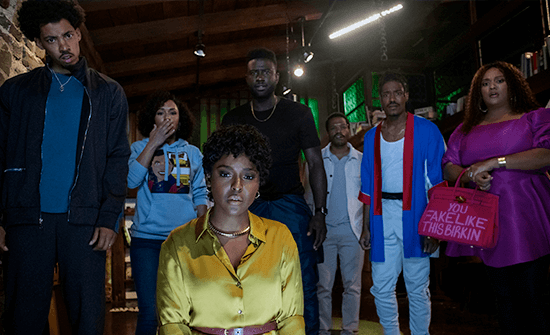 Although The Blackening avoids the so-called final girl cliché in favor of its ensemble, the writers don’t test slasher archetypes in their character construction. Antoinette Robertson stars as Lisa, who receives the most screen time. Much to the chagrin of her friends, among them Allison (Grace Byers), Lisa has been pulled back into an unhealthy relationship with Nnamdi (Sinqua Walls). This upsets Lisa’s gay best friend (Dewayne Perkins), giving the characters a personal conflict to work through in between scenes of horror mayhem. There’s also Shanika (X Mayo), the party girl armed with snacks and booze; King (Melvin Gregg), a reformed gangster on the defensive because he married a white woman; and the awkward Clifton, played by Jermaine Fowler, who channels Steve Urkel in his performance. They’re all hunted by a towering figure with a penchant for Saw-like punishments; he moves at the speed of Jason Voorhees, uses a crossbow, and disguises his face in a leather mask that resembles a grotesque Black minstrel.
Although The Blackening avoids the so-called final girl cliché in favor of its ensemble, the writers don’t test slasher archetypes in their character construction. Antoinette Robertson stars as Lisa, who receives the most screen time. Much to the chagrin of her friends, among them Allison (Grace Byers), Lisa has been pulled back into an unhealthy relationship with Nnamdi (Sinqua Walls). This upsets Lisa’s gay best friend (Dewayne Perkins), giving the characters a personal conflict to work through in between scenes of horror mayhem. There’s also Shanika (X Mayo), the party girl armed with snacks and booze; King (Melvin Gregg), a reformed gangster on the defensive because he married a white woman; and the awkward Clifton, played by Jermaine Fowler, who channels Steve Urkel in his performance. They’re all hunted by a towering figure with a penchant for Saw-like punishments; he moves at the speed of Jason Voorhees, uses a crossbow, and disguises his face in a leather mask that resembles a grotesque Black minstrel.
Though horror aficionados may envision a Get Out (2017) or Surviving the Game (1994) scenario at work, the motivations behind the killings are far more unique. However, the manner in which The Blackening carries out the finale is underwhelming, with lots of speeches and over-explanation. The material may initially seem strange for director Tim Story, helmer of Barbershop (2002) and Ride Along (2014). But many comedy-centric talents have taken to horror in recent years—from Jordan Peele to Zach Cregger—and Story applies his chops to a horror-comedy that’s both funny and chilling. Along with cinematographer Todd A. Dos Reis, Story crafts tense scenes involving the crossbow and one memorable pummeling. But The Blackening is more comedy than horror, resolving to leave most of the blood off-screen. Instead, Story and editor Peter S. Elliot deploy well-timed comic beats. Take when a surprisingly sympathetic cop, named Officer White (Diedrich Bader) no less, comes to the rescue, and someone quips, “I’ve never been so happy to see a white savior.”
Made for $5 million, the production’s low budget is reflected in the modest presentation, which places scares secondary to the satire about Black characters in horror movies. The most disturbing scene comes at the end, when the characters wonder what happens next. After all, the predominantly white cast of Scream (1996) could call the cops after a slasher attack. But given the climate of racial profiling and police shootings, who can people of color call in such an emergency? Still, the movie never quite elevates beyond the goofy horror-comedy conceit, despite its meta-textuality and social commentaries. From the pre-credits death scene to the ongoing discussion of horror tropes, The Blackening wants to become the next Scream. It’s never that clever or scary, and it’s making points about the genre that Scream 2 made over 25 years ago. Regardless, it’s the kind of crowd-pleasing movie where you can’t hear the next joke because the audience is still laughing from the last one.
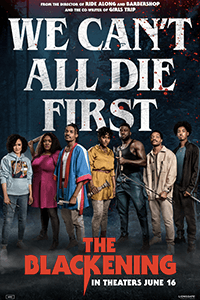
Unlock More from Deep Focus Review
To keep Deep Focus Review independent, I rely on the generous support of readers like you. By joining our Patreon community or making a one-time donation, you’ll help cover site maintenance and research materials so I can focus on creating more movie reviews and critical analysis. Patrons receive early access to reviews and essays, plus a closer connection to a community of fellow film lovers. If you value my work, please consider supporting DFR on Patreon or show your support in other ways.
Thank you for your readership!
Brian Eggert | Critic, Founder
Deep Focus Review


